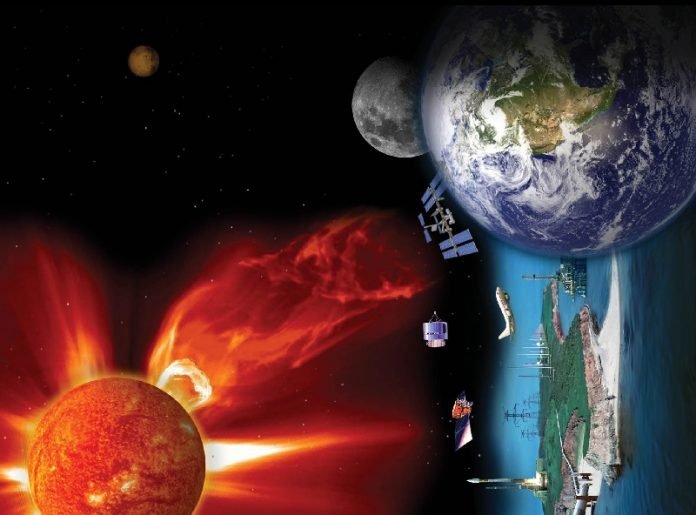
Researchers propose in a new study why an extreme solar storm in 1859 was so damaging to Earth’s magnetic field.
They compared the storm with other extreme storms in history, suggesting this storm is not likely unique.
The September 1859 Carrington Event ejected concentrated solar plasma towards Earth, disrupting the planet’s magnetic field and leading to widespread telegraph disturbances and even sporadic fires.
New research in AGU’s journal Space Weather indicates storms like the Carrington Event are not as rare as scientists thought and could happen every few decades, seriously damaging modern communication and navigation systems around the globe.
“The Carrington Event was considered to be the worst-case scenario for space weather events against the modern civilization… but if it comes several times a century, we have to reconsider how to prepare against and mitigate that kind of space weather hazard,” said Hisashi Hayakawa, lead author of the new study and an astrophysicist at Osaka University in Osaka, Japan and Rutherford Appleton Laboratory in the United Kingdom.
The Carrington Event is one of the most extreme solar storms observed in the last two centuries and was caused by a large coronal mass ejection, an emission of plasma from the Sun’s outmost atmosphere.
Depending on a coronal mass ejection’s strength and trajectory, it can significantly distort Earth’s magnetic field, causing an intense magnetic storm, global auroras and damaging any technology that relies on electromagnetic waves.
Scientists previously thought events like the Carrington Event were very rare, happening maybe once a century.
They knew the Carrington Event caused low-latitude auroras and failure of telegraph equipment throughout the globe, but they had mostly studied records from the Western Hemisphere, leaving a considerable data gap in the Eastern Hemisphere.
In the new study, Hayakawa and his colleagues wanted to improve reconstructions of the Carrington event and compare this event with other extreme storms.
They organized an international collaboration and compiled historical observations of auroras during the storm from the Eastern Hemisphere and Iberian Peninsula to fill the gaps in their knowledge from studying only the Western Hemisphere records.
The researchers collected observations of the storm’s auroras from the Russian Central Observatory, Japanese diaries, and newspapers from Portugal, Spain, Australia, New Zealand, Mexico and Brazil.
They then compared these observations to previous reports of the storm from the Western Hemisphere, like ship logs, contemporary scientific journals, and more newspapers.
The researchers also analyzed several unpublished sunspot drawings made by European astronomers during the 1859 storm.
Analyzing these drawings allowed them to determine where on the Sun the storm originated and track how the sunspot group grew and shrank over time.
The newly recovered historical documents suggest the Carrington sunspot group had probably launched multiple outbursts from early August to early October, including a preceding solar storm in late August 1859.
The researchers estimate this event happened around August 27th, 1859 and sent out separate coronal mass ejections that were strong enough to impact Earth’s magnetic field. The August storm may have played a role in making the September Carrington Event so intense.
After reconstructing the storms around the Carrington Event, the researchers compared the solar storm to other storms in 1872, 1909, 1921, and 1989 and found two of them – those in 1872 and 1921 – were comparable to this event.
The 1989 event caused a serious blackout throughout all of Quebec, Canada. This means events like the Carrington may not be as legendary and elusive as once thought, and scientists need to consider the hazards of such events more seriously than before, according to Hayakawa.
“While the 1859 storm was certainly one of the most extreme events, this seems at best comparable to the 1872 storm and 1921 storm in terms of its intensity,” he said.
“So, the Carrington event is no longer something unique. This fact may require us to reconsider the occurrence frequency of this kind of ‘worst-case scenario’ of space weather events.”
Written by Abigail Eisenstadt.



